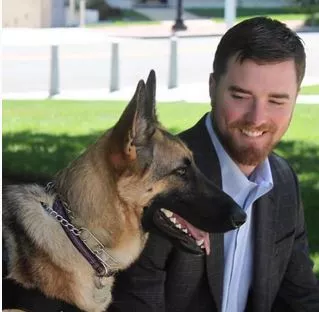After serving in the Marines for six years, including a tour in Afghanistan, Cole Lyle returned home and suffered severe PTSD, social isolation, and difficulty reintegrating into civilian life.
In his own words, “Coming home really was just the lowest point in my life, and I was two pounds of trigger pull away from being one of the statistics – a veteran’s suicide statistic – if it had not been for another Marine that intervened.”
Determined to overcome his struggles, Cole requested a service dog from the VA to provide emotional support. However, after months of waiting, the VA denied his request. Cole then paid over $10,000 out of his own pocket to secure his famous service dog, Kaya, who has become his constant companion and best friend.
Now serving as the Executive Director of Mission Roll Call, Cole is dedicated to advocating on Capitol Hill for the 18 million veterans across the U.S. and to ending veteran suicide through holistic care, community integration, and greater access to quality healthcare.
Visit Mission Roll Call for more information.


